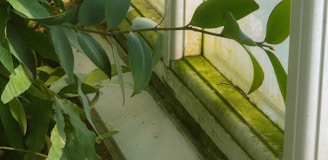
Expert Mold Removal and Moldy Drywall Repair Services Blue Springs Locals Depend On!
Repairing Moldy Drywall: Your Guide to Restoring Healthy Walls
Mold can be a persistent problem in homes and businesses, particularly in humid areas like Blue Springs, MO. If you've discovered mold on your drywall, it's crucial to address it promptly to prevent further mold damage and maintain a healthy indoor environment. In this guide, we'll walk you through the steps to repair moldy drywall effectively to help you find the best local resources for mold removal.


Assess the Extent of Mold Damage
Before you begin repairing moldy drywall, assess the extent of the damage. This evaluation will determine whether you can address the issue yourself or if you need professional assistance from mold removal experts in Blue Springs, MO.
1. Safety First:
Wear appropriate safety gear, including a mask, gloves, and eye protection, to prevent exposure to mold spores.
2. Inspect the Drywall:
Check the drywall's surface for visible mold growth. Mold can appear as black or green spots and often has a musty odor.
3. Probe for Damage:
Use a screwdriver or utility knife to gently probe the affected area. If the drywall feels soft, crumbly, or shows signs of structural damage, it may need to be replaced.


Gather Your Tools and Materials
To repair moldy drywall effectively, you'll need a few essential tools and materials:
- Utility knife or drywall saw: For cutting out affected areas.
- Plastic sheeting: To isolate the work area and contain mold spores.
- Trash bags: For disposing of moldy materials.
- Bleach or mold cleaner: To kill and remove mold from non-porous surfaces.
- Safety gear: As mentioned earlier, including a mask, gloves, and eye protection.
- Drywall patch or replacement drywall: Depending on the extent of damage.
- Joint compound: For patching and smoothing the drywall.
- Sandpaper: To prepare the patched area for painting.
- Primer and paint: To finish the repair.


Steps for Repairing Moldy Drywall
1. Isolate the Work Area
- Seal off the affected area with plastic sheeting and secure it with painter's tape to prevent mold spores from spreading to other parts of your home.
2. Remove the Mold-Damaged Drywall
- Using your utility knife or drywall saw, carefully cut out the mold-damaged drywall. Ensure that you cut at least 6 inches beyond the visible mold to eliminate all affected areas.
- Double-bag the moldy drywall and dispose of it in accordance with local regulations.
3. Clean and Disinfect
- Thoroughly clean the remaining surfaces with a bleach solution or a mold cleaner designed for this purpose. Follow the product's instructions.
- Allow the area to dry completely before proceeding.
4. Patch the Drywall
- If the damage is minor, use a drywall patch to cover the hole or damaged area. Apply joint compound to smooth the patch and feather the edges.
- For larger areas, cut a piece of replacement drywall to fit the hole and secure it in place with drywall screws. Apply joint compound over the seams and smooth it out.




5. Sand and Paint
- Once the joint compound is dry, sand the patched area until it's smooth and even with the surrounding wall.
- Apply primer and then paint to match the rest of the wall.
6. Prevent Future Mold Growth
- Address the root cause of the mold issue, whether it's a leak, high humidity, or poor ventilation. Fixing these problems will help prevent future mold growth.


If the mold damage is extensive or you're uncomfortable tackling the repair yourself, it's advisable to seek professional assistance from experienced mold removal experts in Blue Springs, MO. They have the expertise and equipment to handle large-scale mold remediation safely and effectively.
In summary, repairing moldy drywall is a manageable DIY project for minor cases of mold damage. However, for extensive or recurring mold problems, it's crucial to consult with professionals to ensure a thorough and lasting solution. By addressing mold issues promptly and effectively, you can maintain a healthy indoor environment and protect your property from further damage.


